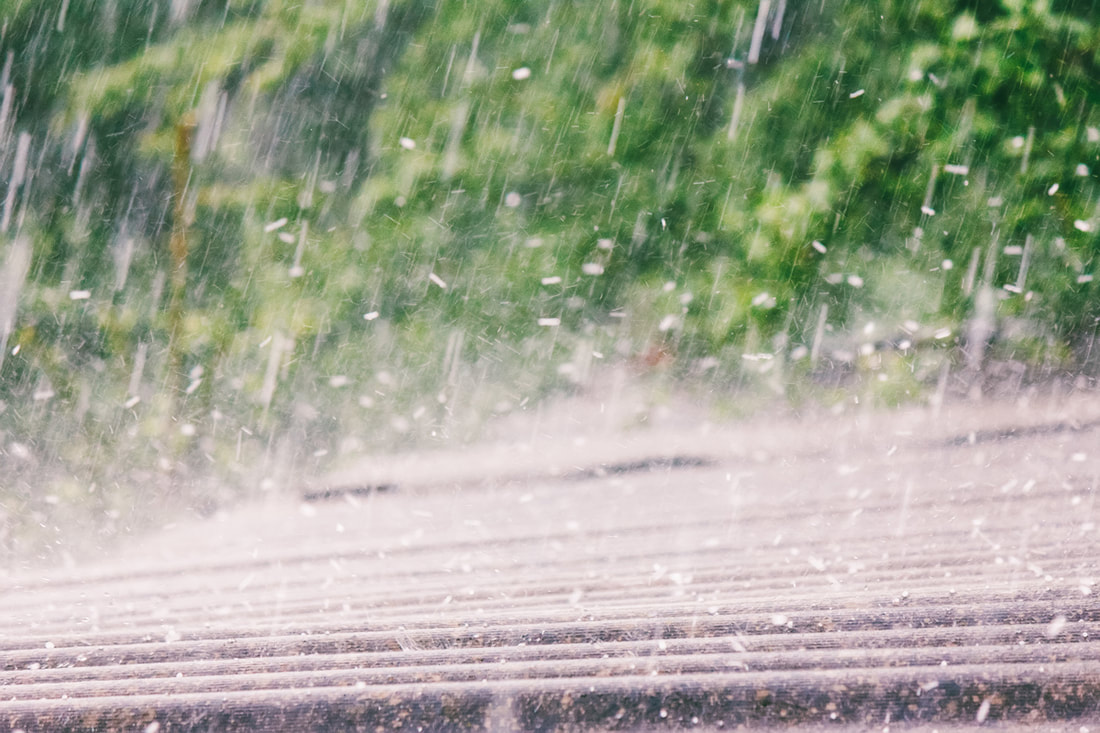What To Do If Your Roof Has Storm Damage

Around 50% of all homeowners insurance claims are weather-related. Mostly due to hail, wind, ice, snow, and rain – all of which can weaken or damage your roof. After a storm, it’s sometimes obvious where the damage is; but other times, it might not be. That’s especially true with roofs, where much of the damage could be out of sight and might be difficult for a non-professional to detect during an up-close inspection.
But what do you do immediately following a storm where you know or suspect that your roof may have been damaged?
Do A Preliminary Self-Inspection Of Your Roof
Using your own discretion as to the safety of doing so, you can either visually inspect your roof from the ground or use a ladder to get a closer look. If you’re concerned that there’s damage, it’s a good idea to avoid getting on the roof itself. But even without doing so, you can do a good post-storm preliminary inspection for possible roof damage.
Start by looking around the house and on the rooftop from a distance for any missing, loose, or dangling shingles. Look for damaged, loose, or dislodged flashing too, along the eaves and in the valleys.
Next, check for hail damage. If you see that your screens, gutters, and downspouts, or siding have clear hail impacts, you can be pretty sure your roof has them too, even if you can’t spot them from the ground.
The next step is to firmly and properly place a ladder against the roof eave so you can climb up and take a look. This should never be done alone however, as it’s important to have someone available to spot you and ensure the ladder is stable. Circle the house, stopping periodically to investigate and always being careful to avoid power lines and uneven ground.
Are there broken or loose shingles, or spots on the shingles where the granules are knocked off? Are the ends of some shingles curled or bent upward? All of these are signs of hail and/or wind damage.
Finally, you should also check for leaks and water damage inside your home. Look at the ceilings, especially around the fixtures. Grab a flashlight and inspect the attic for possible leaks. Remember that any leaks caused by storm damage could grow with time, even if they’re only very small right now.
Get A Professional Follow Up Inspection
If you locate any storm damage to your roof or have a suspicion that things aren’t as they should be, you should call a professional roofing company to do an inspection. They’ll be able to tell you exactly what damage has occured, if any, and inform you of the next steps to re-establish the integrity of your home.
Once any problems have been identified, it’s time to contact your homeowners’ insurance provider to see if storm-caused roof repairs will be covered.
Choosing The Right Roofing Contractor
Take great care in choosing your roof repair contractor. Never simply go with a contractor who happens to show up at your door or contacts you right after a storm as this is the time when unlicensed contractors come out of the woodwork.
Instead, research which local companies who are well known for high-quality workmanship, impeccable customer service, and quick response time. Your roof is certainly one of the most important parts of your home’s structure, so it’s important that you have it repaired correctly and avoid any future issues.
At Sheegog Contracting, we have a long history of serving families in Central Florida. Contact us today to learn more about how we can assist you after a storm.


